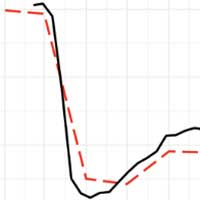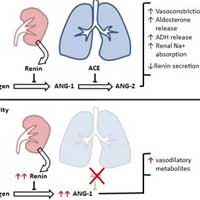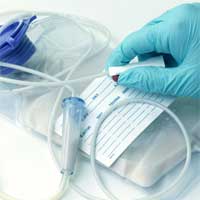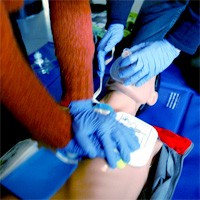Tag: cardiology

Consequences of Cardiopulmonary Bypass: What the Intensivist Needs to Know
Cardiopulmonary bypass (CPB) is common for most cardiac surgeries. CPB drains blood from the heart and returns it to the proximal systemic circulation allowing perfusion during the operative period. It was pioneered in 1951... read more

Pulse Wave Analysis to Estimate Cardiac Output
Cardiac output (CO)–guided therapy is a promising approach to hemodynamic management in high-risk patients having major surgery and in critically ill patients with circulatory shock. Pulmonary artery thermodilution remains... read more

Angiotensin II in Post Cardiopulmonary Bypass Vasoplegia
Post cardiopulmonary bypass vasoplegia is common, and associated with poor outcomes. Traditional management strategies involving escalating doses of catecholamines, vasopressin and adjuncts such as methylene blue and hydroxycobalamin... read more

Survey Finds More Than Half of Pediatric Cardiology Nurses Are Burned Out
More than half of nurses caring for children with cardiovascular conditions are emotionally exhausted and good working environments were linked with less burnout, according to a survey presented during ESC Congress 2020. Of... read more

Non-Invasive Cardiac Imaging for LVAD and OHT During COVID-19
Considerations for cardiac imaging in the COVID-19 era include thoughtful patient and study selection with a goal to limit the overall number of tests. General recommendations are as follows: Defer routine or low-risk... read more

The Use of ECMO in Patients with Cardiopulmonary Failure Due to COVID-19
COVID-19 related cardiopulmonary failure such as ARDS and cardiogenic shock or massive pulmonary embolism can be successfully supported with ECMO. Judicious patient selection is important to enable maximal benefit and optimized... read more

Rapid Advancement in Enteral Nutrition Does Not Affect Systemic Inflammation and Insulin Homeostasis Following Pediatric Cardiopulmonary Bypass Surgery
A FF strategy was not associated with changes to early enteral nutrition delivery. Inflammation, insulin resistance, and morbidity were similar, but FF may modify the relationship between inflammation and adverse event. Multicenter... read more

Research Shows Increased Thrombus Burden in COVID-19 Patients With STEMI
There may be a strong signal towards higher thrombus burden and poorer outcomes in COVID-19 patients presenting with STEMI, supporting the need for establishing COVID-19 status in all STEMI cases, according to a study published... read more

Haloperidol for Treatment of Headache in the ED
Headache is a common chief complaint that emergency physicians encounter almost every day and sometimes multiple times in each shift. In fact, headache is the fifth leading cause of patients presenting to the emergency department... read more

Manual of ICU Procedures
Manual of ICU Procedures is a comprehensive, step-by-step guide to intensive care procedures. The book is divided into four anatomical sections, and a final miscellaneous section. Section one covers airway and respiratory,... read more

Cardiopulmonary Resuscitation in the Emergency Department During COVID-19
Emergency medical services (EMS) is called for a 65-year-old man with a 1-week history of cough, fever, and mild shortness of breath now reporting chest pain. Vitals on scene were HR 110, BP 135/90, SpO2 88% on room air.... read more

RAAS Inhibitors and Risk of COVID-19
The authors concluded that RAAS inhibitors do not increase the risk of COVID-19 requiring admission to the hospital, including fatal cases and those admitted to intensive care units (ICUs), and should not be discontinued... read more

Comparison of Echocardiographic and Invasive Measures of Volaemia and Cardiac Performance in Critically Ill Patients
Static echocardiographic variables did not reliably reflect the volume state as defined by estimates of mean systemic filling pressure. There was no statistical or clinically robust relationship between static echocardiographic... read more

Palliative Care Considerations For Patients With Cardiovascular Disease Under COVID-19
COVID-19 has dramatically altered our world, health care systems and supply chains. Older adults with cardiovascular disease especially those over 80 years suffer disproportionately. This pandemic has stressed the capacity... read more




